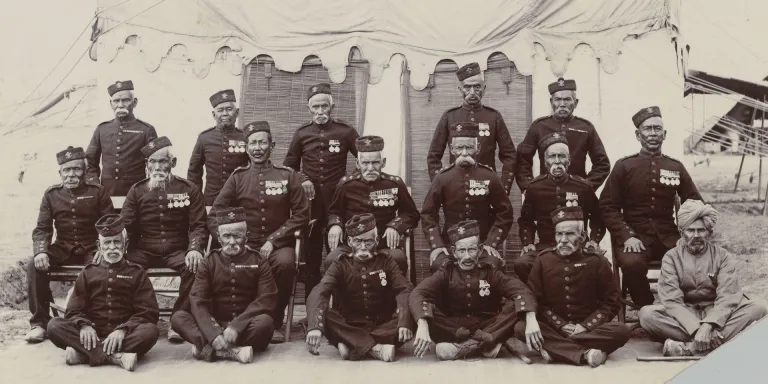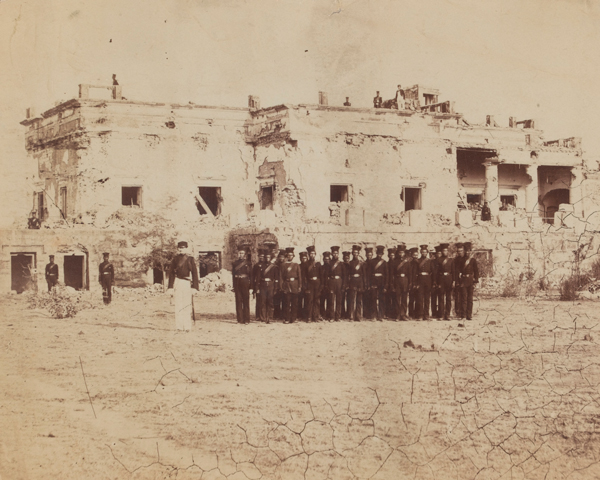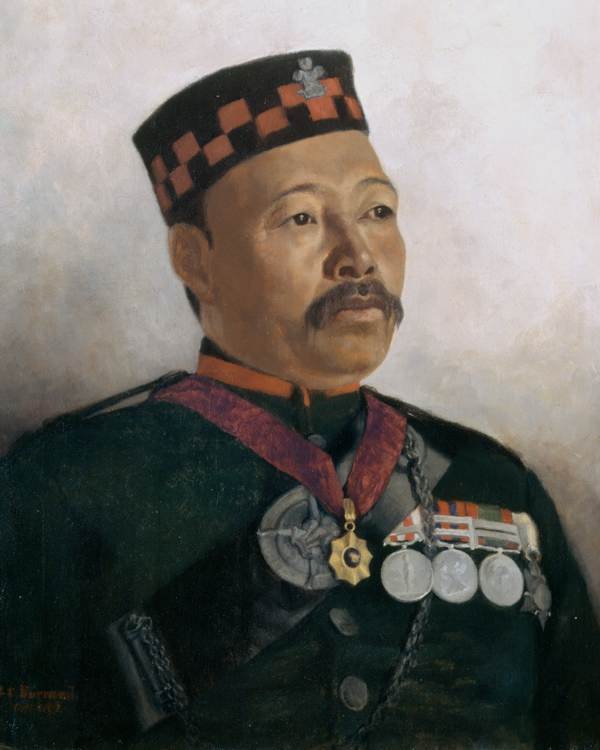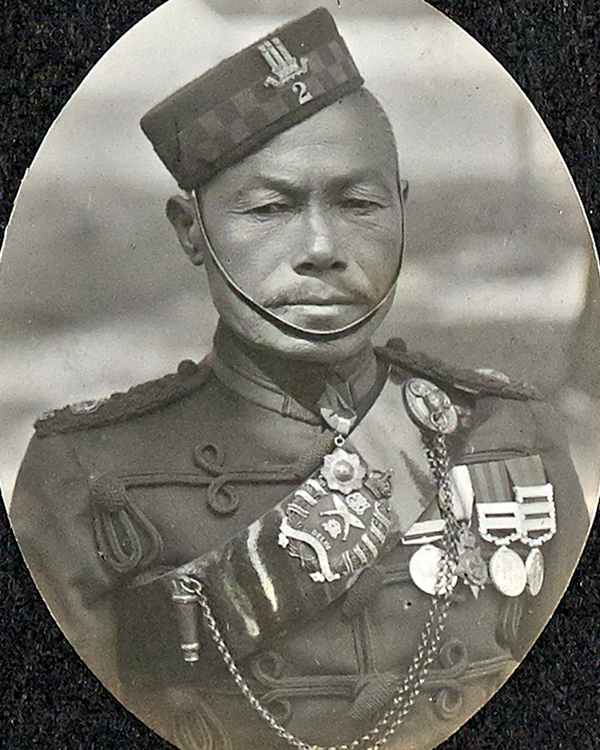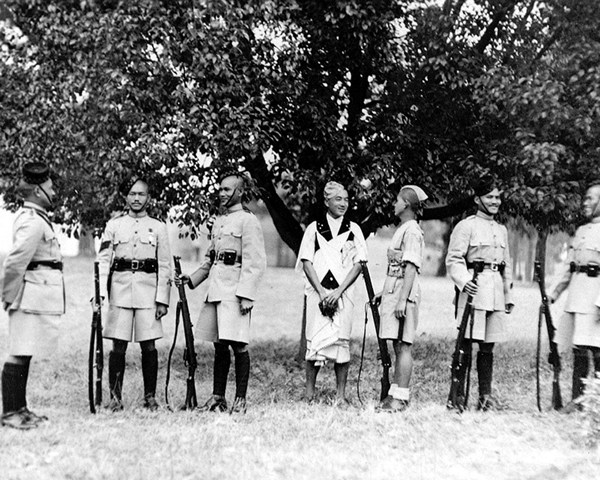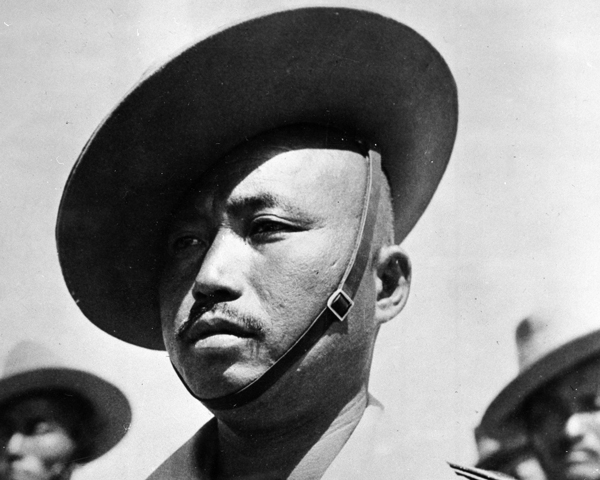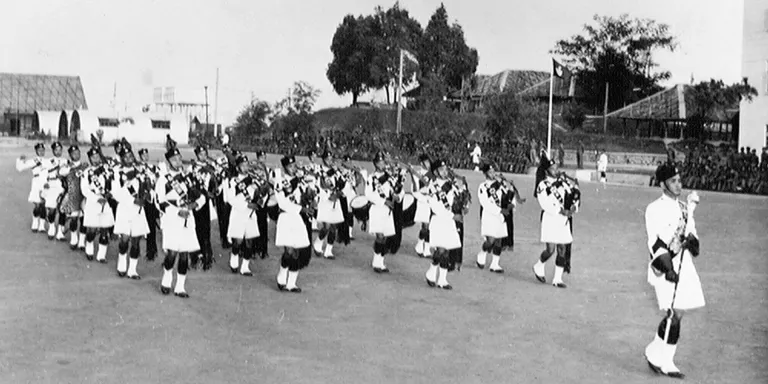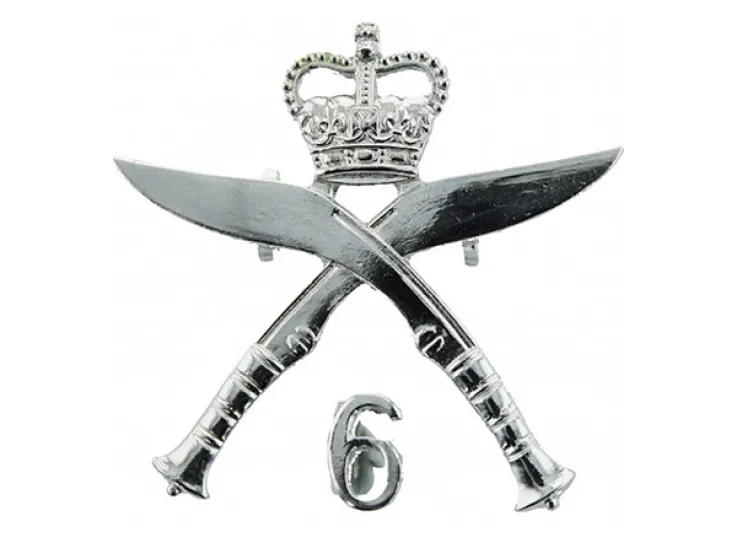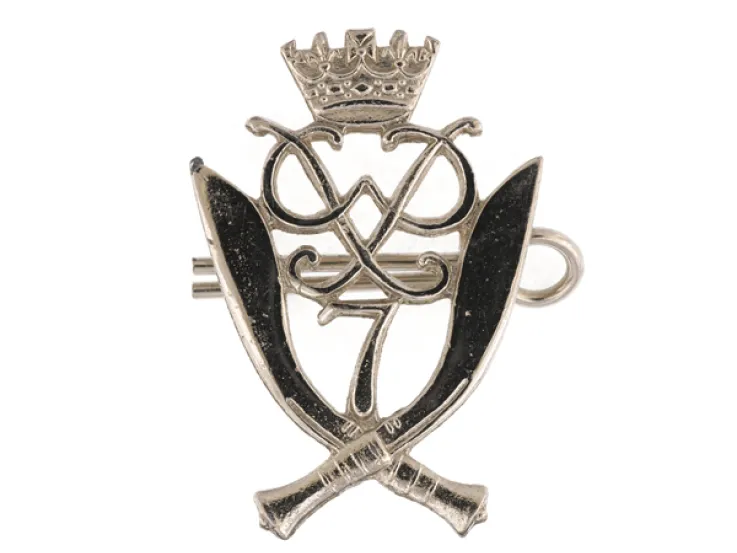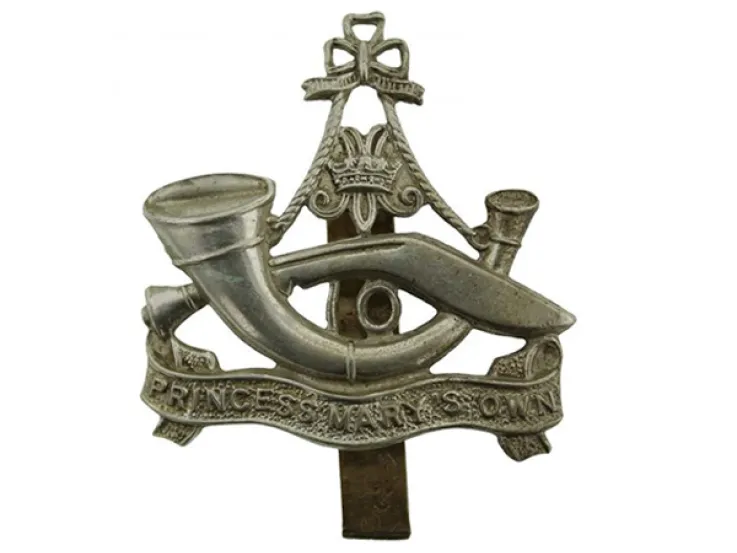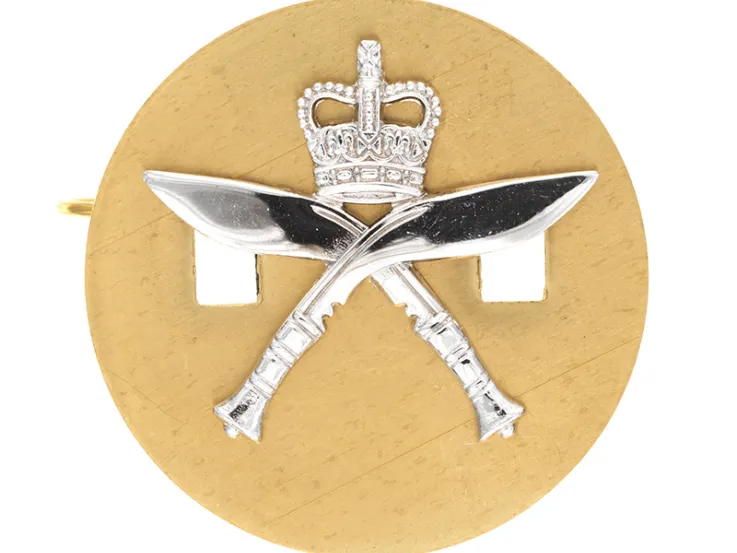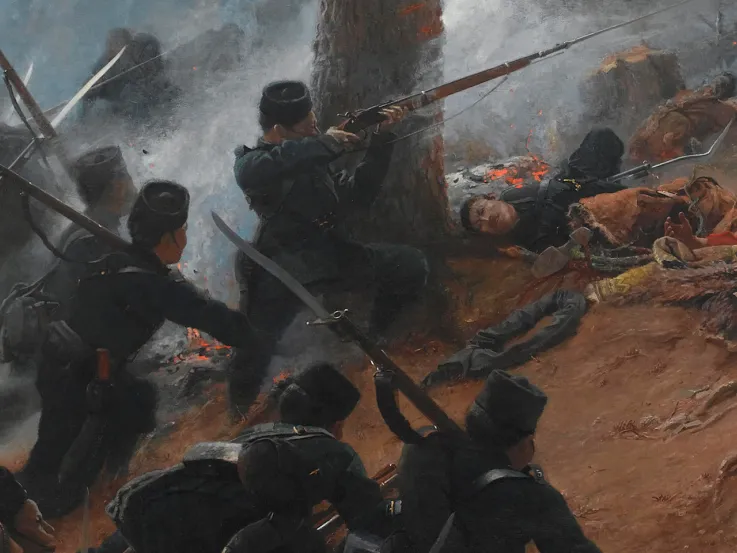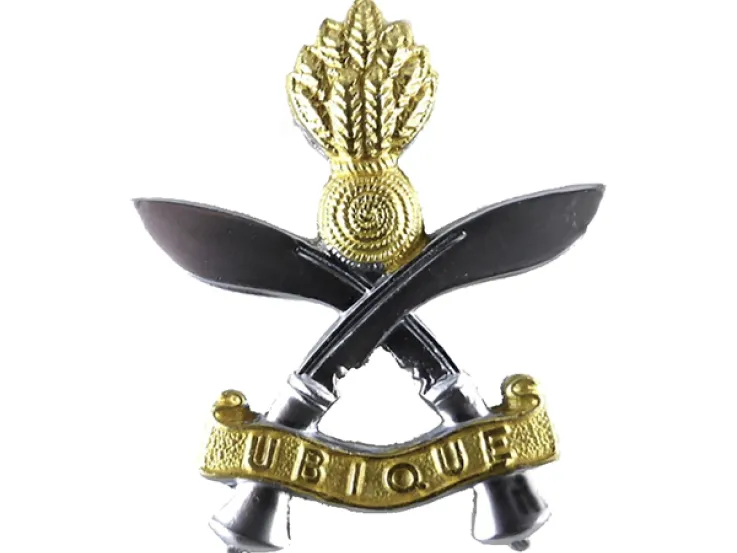Explore more from Regiments and Corps
2nd King Edward VII’s Own Gurkha Rifles (The Sirmoor Rifles)
Related topics
Indian Mutiny veterans of the 2nd (Prince of Wales's Own) Gurkha Regiment, c1880
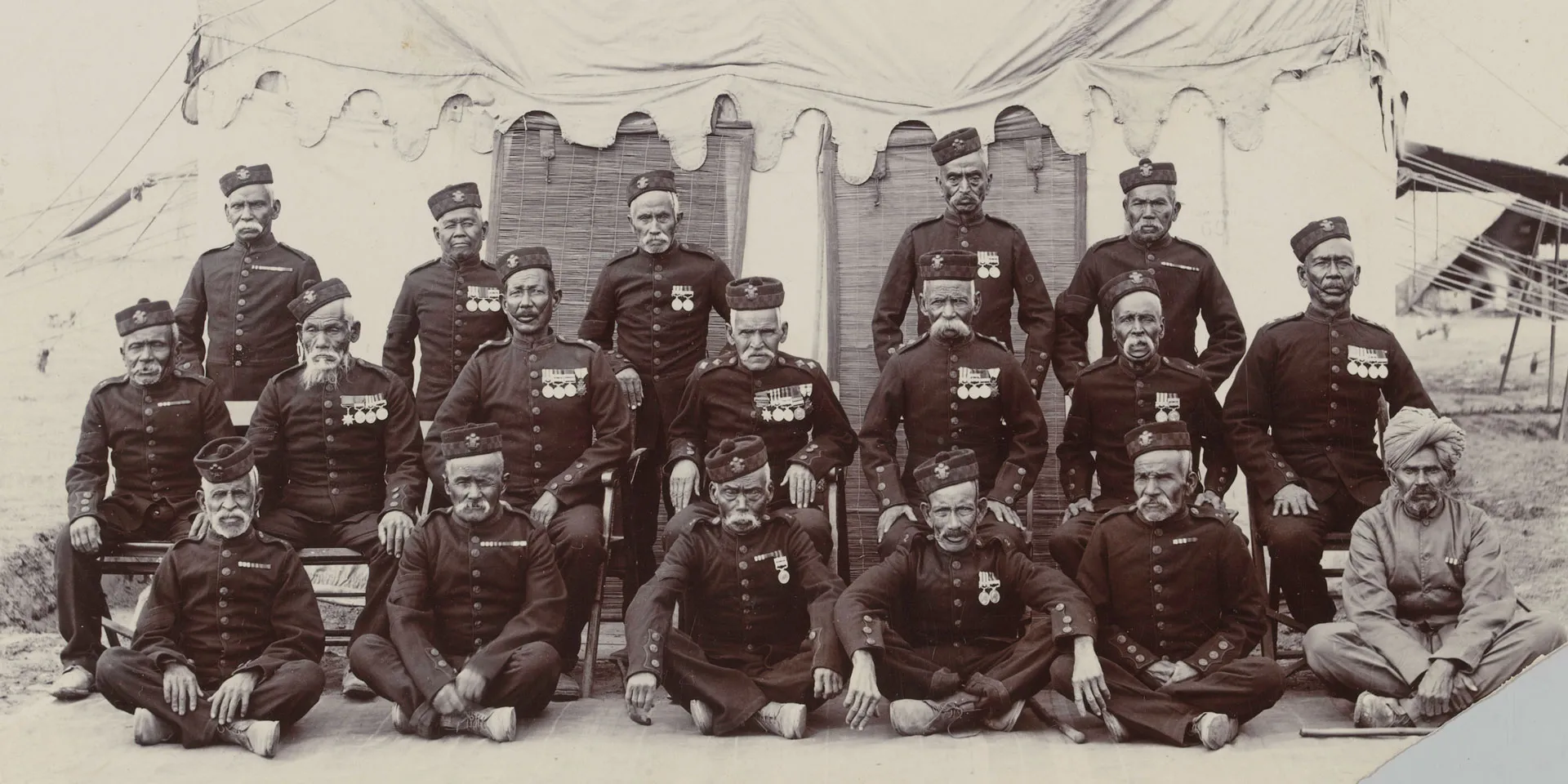
Origins
This regiment was originally formed as The Sirmoor Battalion in 1815. It fought in the Third Maratha War (1817-19), becoming the first Gurkha unit in the army of the East India Company to see active service.
It gained its first battle honour at the Siege of Bharatpur in 1825, going on to serve during the First Sikh War (1845-46). It saw action in several major battles, including Aliwal (1846) and Sobraon (1846).
The Battalion later served in the Indian Mutiny (1857-58). During the Siege of Delhi in 1857, it helped garrison Hindu Rao’s House on the Delhi Ridge, where it was subjected to repeated attacks. It then took part in the storming of the city. During this period, it suffered 327 casualties out of a total strength of 490, including eight of its nine British officers.
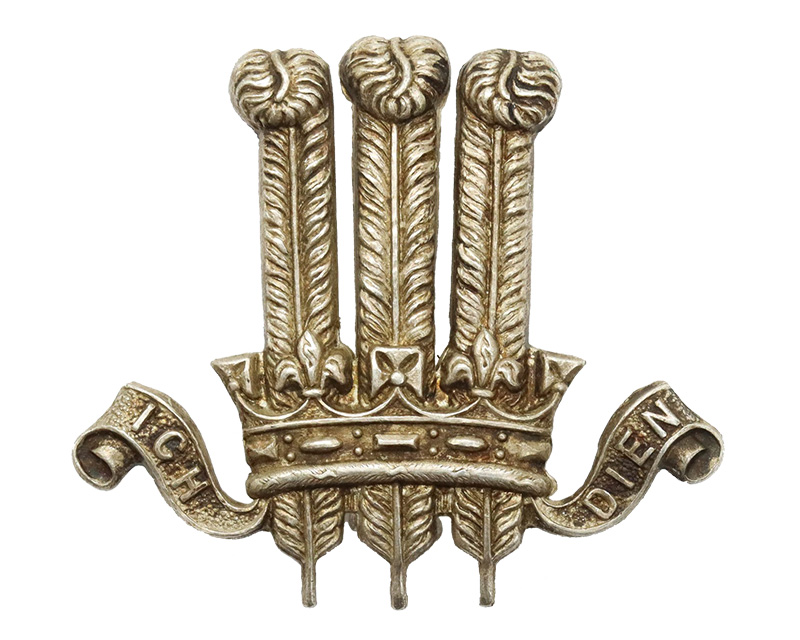
Cap badge, 2nd King Edward's Own Gurkha Rifles, c1920
Sirmoor Battalion soldiers outside Hindu Rao's house, c1858
Indian Army service
When the East India Company was dissolved in 1858, The Sirmoor Battalion became a rifle regiment in the British Indian Army. It was subsequently numbered as the 2nd Goorkha Regiment in 1861.
In 1863, Queen Victoria awarded the regiment a ceremonial staff, known as the Queen’s Truncheon. This was to recognise its notable contribution during the Siege of Delhi (1857). Today, its successor unit, the Royal Gurkha Rifles, continues the tradition of using this staff in place of regimental colours.
In 1876, Victoria’s eldest son became the regiment’s patron. Accordingly, its name changed to the 2nd (Prince of Wales's Own) Goorkha Regiment (The Sirmoor Rifles). It also adopted the Prince's feathers, coronet and motto as its cap badge.
In 1886, the regiment raised a 2nd Battalion. Like the 1st, this served in various Indian cantonments. The 1st Battalion also fought in the Second Afghan War (1878-80) and on the North-West Frontier in 1897.
After the Prince of Wales had acceded to the throne as King Edward VII, the regiment updated its name to 2nd King Edward's Own Gurkha Rifles (The Sirmoor Rifles) in 1906.
Subadar Major Judbhir Thapa, 2nd Gurkha Rifles, 1893
Subadar Major Narbahadur Gurung, 2nd Gurkha Rifles, 1911
World Wars
At the start of the First Word World War (1914-18), the regiment served on the Western Front, fighting in many of the conflict's early battles. 1st Battalion then moved to Mesopotamia in 1916 and Persia in 1918, while 2nd Battalion went to Egypt and Palestine in 1915, before returning to India.
The regiment raised a 3rd Battalion in 1917. This served in India and in the Third Afghan War (1919), before being disbanded in 1920.
Following the accession of King Edward VIII in 1936, it was given the more specific title of the 2nd King Edward VII's Own Gurkha Rifles (The Sirmoor Rifles) to distinguish between the two King Edwards.
During the Second World War (1939-45), 1st Battalion served in Cyprus, North Africa and Italy. In 1942, 2nd Battalion was captured by the Japanese in Singapore. The regiment also raised a new 3rd Battalion in 1940. This unit saw action in Burma before being renumbered as 2nd Battalion in 1946.
Members of 2nd Gurkha Rifles at Dehra Dun, 1938
Subadar Lal Bahadur Thapa VC, 2nd Gurkha Rifles, 1943
British Army service
After India gained its independence in 1947, the 2nd Gurkha Rifles was one of four Gurkha regiments to transfer to the British Army the following year. However, its 4th Battalion transferred to the 8th Gurkha Rifles, which remained part of independent India's army.
Over the next two decades, the regiment spent much of its time deployed in the Far East. Both battalions saw action in the Malayan Emergency (1948-60) and the Indonesian Confrontation (1963-66). After that, they rotated with the other Gurkha regiments of the British Army between England, Hong Kong and Brunei.
Pipe band of 2nd Battalion, 2nd King Edward VII's Own Gurkha Rifles (The Sirmoor Rifles), Johore, Malaya, 1957
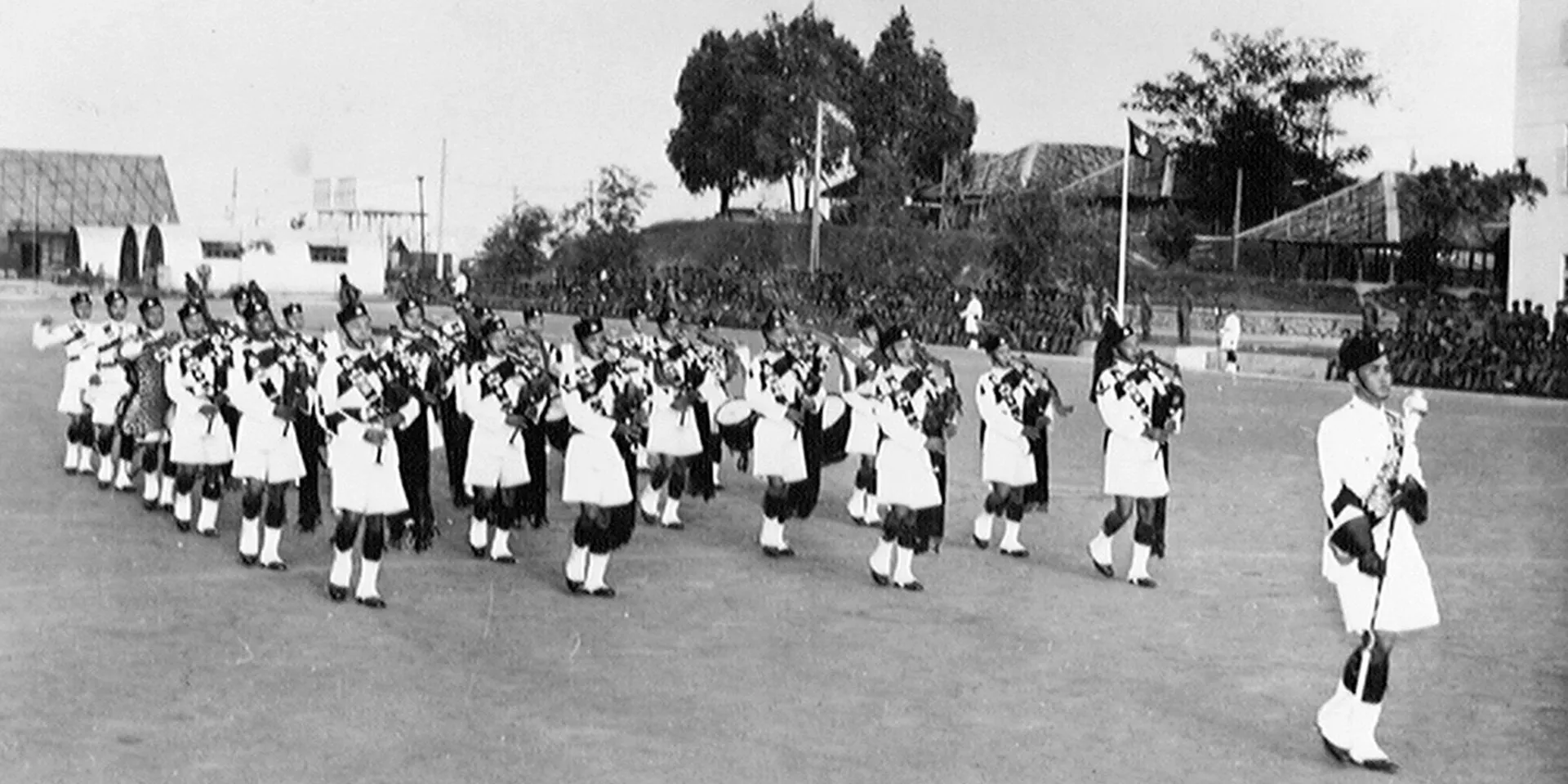
Legacy
In 1992, the regiment was reduced to a single battalion. Two years later, it was amalgamated with the 6th Queen Elizabeth's Own Gurkha Rifles, the 7th Duke of Edinburgh's Own Gurkha Rifles and the 10th Princess Mary's Own Gurkha Rifles to form The Royal Gurkha Rifles.
Regimental museums
The National Army Museum works with a network of Regimental and Corps Museums across the UK to help preserve and share the history and traditions of the Army and its soldiers.
Discover more about the 2nd King Edward VII's Own Gurkha Rifles by visiting The Gurkha Museum in Winchester.

